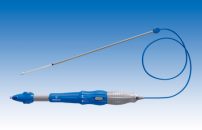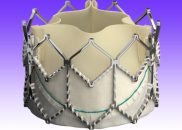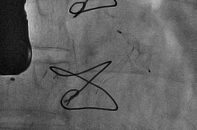Courtesy of the SBHCI. The risk of surgical mitral valve replacement in patients with significant annular calcification is very high. There are isolated reports of transcatheter mitral valve replacement with balloon-expandable valve in this patient population. In consequence, this multicenter registry tries to concentrate information and analyzes the outcomes a year after the procedure. …
Cerebral protection during TAVI still offers weak evidence, but there is hope
Silent ischemic embolic lesions are common after transcatheter aortic valve implantation (TAVI). The use of cerebral protection devices might reduce the occurrence of these embolic lesions. Multiple studies with different devices, designs, and outcomes challenge the usefulness of cerebral protection during TAVI. A comprehensive analysis of the literature was necessary to obtain a more…
Moderate Aortic Stenosis and Ventricular Dysfunction: Should Valve Replacement Come Sooner?
Ventricular dysfunction and moderate aortic stenosis are more frequent with advancing age and often coexist. Afterload reduction is one of the main pillars of pharmacological treatment of heart failure, and aortic stenosis (even that of moderate severity) increases the afterload. Nowadays, aortic valve replacement is only formally indicated for symptomatic severe aortic stenosis. This…
CENTERA: Results of the New Self-Expandable Valve
This new device offers the advantage of a lower frame height, which reduces the chance of coronary occlusion. The delivery system is totally motorized and the valve can be repositioned. In addition, the sheath is “14 F” for all valve sizes (23, 26 and 29mm). 203 patients were included, all with severe aortic stenosis…
ARTE: Aspirin or Aspirin and Clopidogrel after TAVR?
Courtesy of SBHCI. This study presented at Euro PCR and simultaneously published by JACC Cardiovascular Interventions poses a question that has remained unanswered since the start of TAVR. There is little information on the optimal antithrombotic therapy after transcatheter aortic valve replacement (TAVR). In general, patients receive between 1 and 6 months of dual…
REPRISE III: Lotus and CoreValve Compared in High-Risk or Inoperable Patients
The efficacy of transcatheter aortic valve replacement (TAVR) has been well-established. However, its limitations include suboptimal deployment and paravalvular leak. The Lotus system is a fully repositionable and retrievable device with controlled mechanical expansion. It features an adaptive seal to minimize paravalvular leak, it does not require early pacing during deployment, and, given its early…
Further Evidence on Managing Dysfunctioning Bioprostheses with Balloon-Expandable Prostheses
Early experience with the valve-in-valve technique in the treatment of failed bioprosthetic surgical valves in transcatheter aortic valve replacement (TAVR) has yielded acceptable acute procedural results. This turned the technique into another therapeutic option, one that could even cause the reassessment of the age limit for the surgical implantation of a mechanical or bioprosthesis valve.…
Bicuspid Aortic Valve Stenosis Still Challenging for TAVR
Courtesy of Dr. Carlos Fava One of the present challenges of TAVR is bicuspid aortic valve stenosis (AS), since it presents a different distribution and structure, associated to greater and more irregular calcification. There are only small series of devices and their use is still controversial. The study analyzed 561 patients with severe bicuspid…
Tricuspid valve repair with the MitraClip technique
Current surgical and medical treatment options for severe tricuspid regurgitation are extremely limited. However, this historically forgotten valve seems to have the option of transcatheter repair, nowadays. This observational study assessed the safety and feasibility of the MitraClip system for patients with severe chronic tricuspid regurgitation. All patients presented severe tricuspid regurgitation and…
Cardiovascular MR Perfusion Imaging: Good Initial Alternative in Stable Chronic Angina
In the initial management of patients with stable chronic angina, a non-invasive strategy with cardiovascular MR perfusion imaging seems to provide similar results to invasive strategies. At one year, MACE rate (combination of all cause death, non-fatal infarction and target vessel revascularization) resulted 3.3% for MRI vs. 3.9% for fractional flow reserve (FFR) informed…
Percutaneous Repair of Paravalvular Leaks After TAVR: The Challenge of Identifying Eligible Subjects
Courtesy of Dr. Carlos Fava. This study enrolled 72 patients who underwent transcatheter aortic valve replacement with an Edwards Sapiens valve, and then experienced a leak of at least moderate severity. Fifteen of them underwent a percutaneous leak repair after identification of the leak mostly through the presence of symptoms. Both groups were similar. Patients who…










